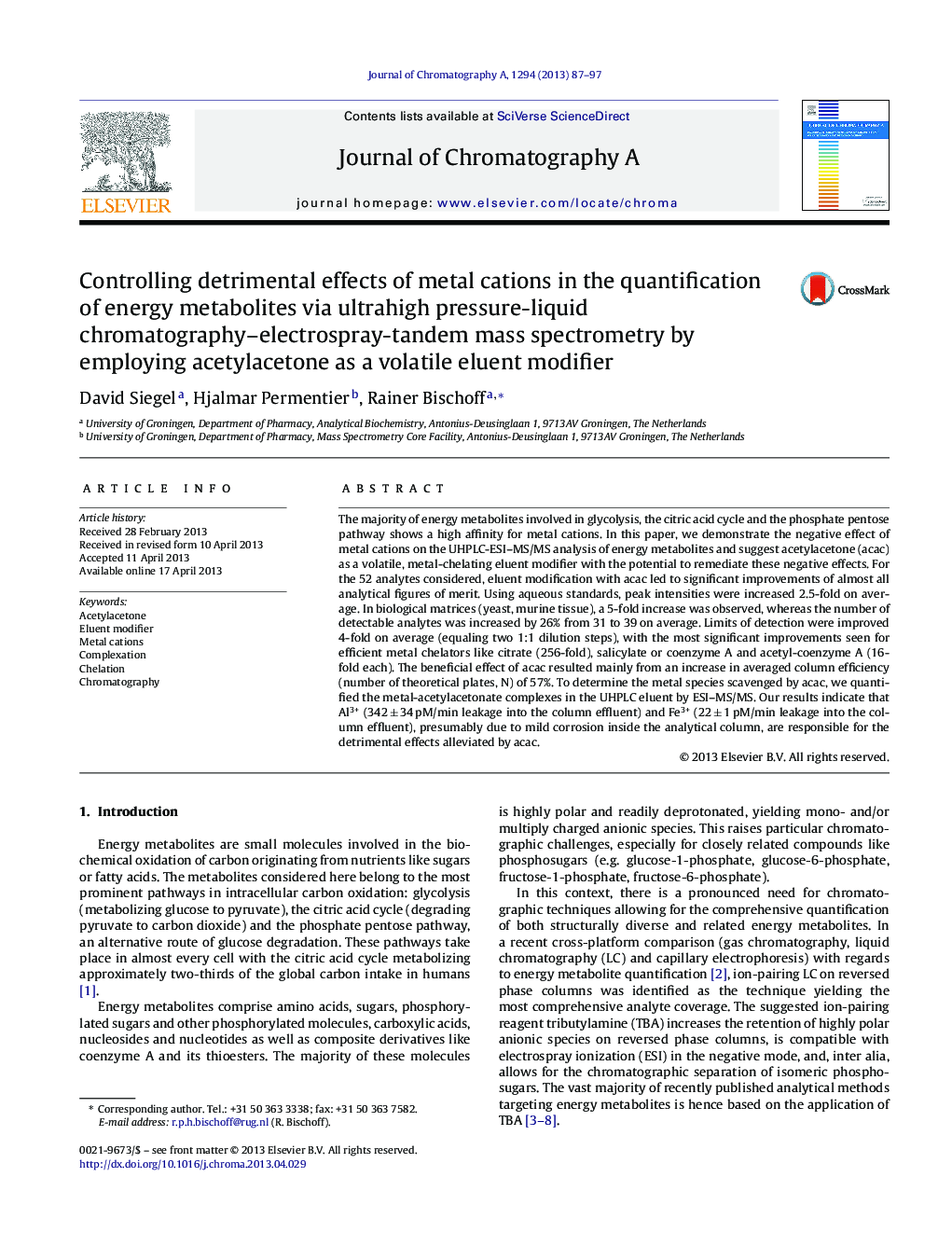| کد مقاله | کد نشریه | سال انتشار | مقاله انگلیسی | نسخه تمام متن |
|---|---|---|---|---|
| 1201013 | 1493632 | 2013 | 11 صفحه PDF | دانلود رایگان |

• Metal cations negatively affect UHPLC-ESI–MS/MS analyses of energy metabolites.
• Addition of acetylacetone to the UHPLC eluent remediates these negative effects.
• Chromatographic efficiency, LODs, variability and linear dynamic range are improved.
• In yeast and murine tissue 5-fold peak intensity increases are observed.
• Metal-acetylacetonates are quantifiable in the column-effluent.
The majority of energy metabolites involved in glycolysis, the citric acid cycle and the phosphate pentose pathway shows a high affinity for metal cations. In this paper, we demonstrate the negative effect of metal cations on the UHPLC-ESI–MS/MS analysis of energy metabolites and suggest acetylacetone (acac) as a volatile, metal-chelating eluent modifier with the potential to remediate these negative effects. For the 52 analytes considered, eluent modification with acac led to significant improvements of almost all analytical figures of merit. Using aqueous standards, peak intensities were increased 2.5-fold on average. In biological matrices (yeast, murine tissue), a 5-fold increase was observed, whereas the number of detectable analytes was increased by 26% from 31 to 39 on average. Limits of detection were improved 4-fold on average (equaling two 1:1 dilution steps), with the most significant improvements seen for efficient metal chelators like citrate (256-fold), salicylate or coenzyme A and acetyl-coenzyme A (16-fold each). The beneficial effect of acac resulted mainly from an increase in averaged column efficiency (number of theoretical plates, N) of 57%. To determine the metal species scavenged by acac, we quantified the metal-acetylacetonate complexes in the UHPLC eluent by ESI–MS/MS. Our results indicate that Al3+ (342 ± 34 pM/min leakage into the column effluent) and Fe3+ (22 ± 1 pM/min leakage into the column effluent), presumably due to mild corrosion inside the analytical column, are responsible for the detrimental effects alleviated by acac.
Journal: Journal of Chromatography A - Volume 1294, 14 June 2013, Pages 87–97